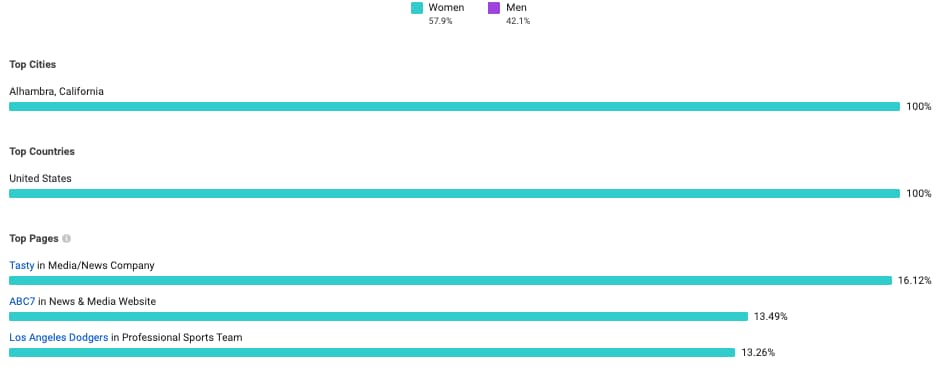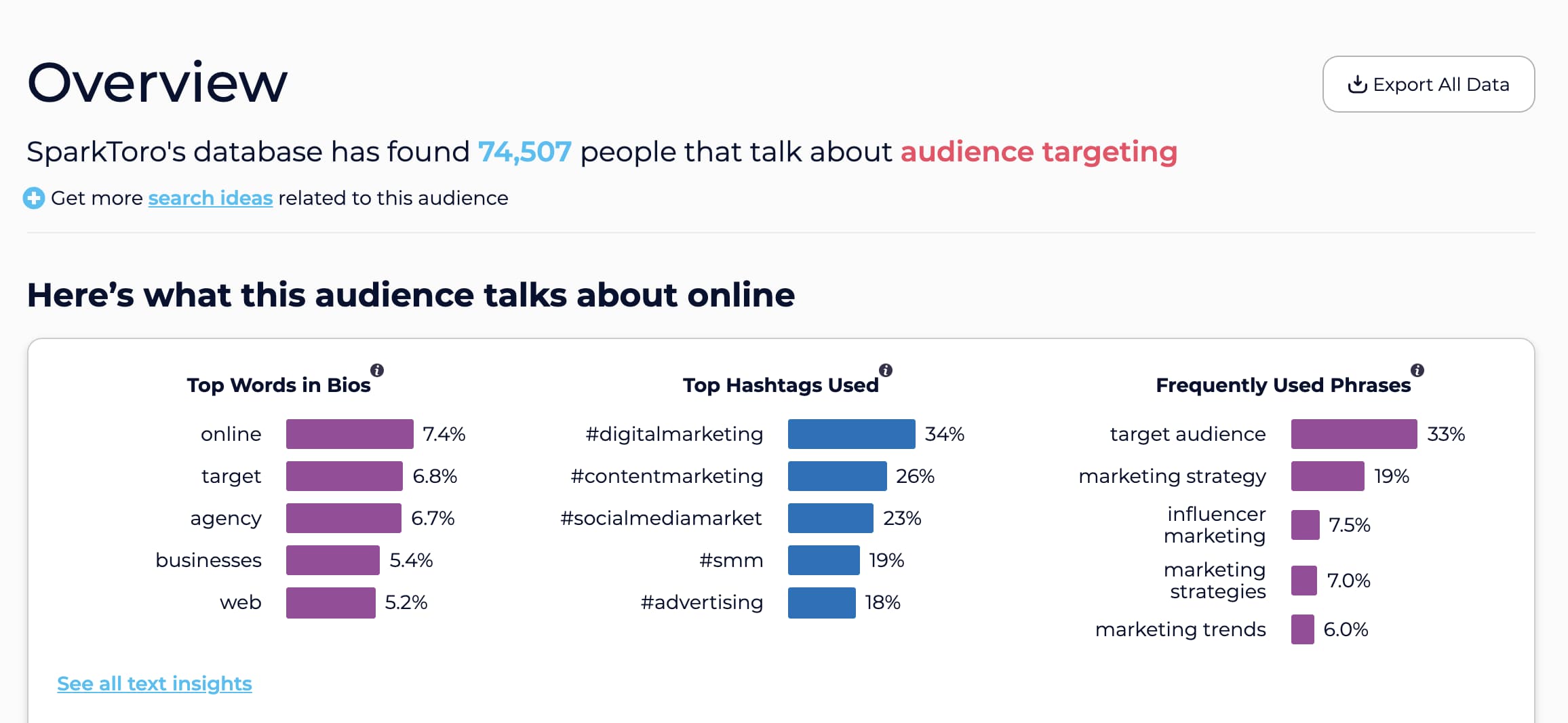For your small business to be successful, you must develop a good marketing strategy that focuses on helping your customer first and foremost.
With only 50% of small businesses surviving beyond their fifth year in business, it becomes even more critical to identify and tap into your potential customers as early as possible.
Apart from being an effective marketing strategy, a good handle on your target audience also brings other benefits. Your advertising campaigns will be more cost-effective, and any new products you create have a better return on investment (ROI).
But how do you efficiently identify who’s likely to buy what your business is offering? Read on as we provide ways on how to pinpoint your target audience with some fundamental ideas borrowed from marketer Seth Godin (especially the final point).
Ways to Identify the Audience Your Small Business should Target
Building a business with the belief that customers will come automatically is a business fallacy that, sadly, most small businesses end up doing.
Did you know that 50% of small businesses still have no marketing plan?
It’s your customers who will bring success to your business, so you must create a connection early on. But before establishing the relationship, you must first identify your target:
1. Create a Demographic Profile
A demographic profile is a collection of characteristics of people or businesses most likely to buy your products or services. Here are the most common attributes to classify your customers:
- Age
- Gender
- Occupation
- Income level
- Marital status
- Hobbies/interests
If you’re selling to other businesses, create a demographic profile with these attributes instead:
- Number of employees
- Size of the industry
- Geographic locations
- Annual sales
If you already have customers, that can give you a good starting point.
Tip: Seth Godin made it simple by narrowing it down to a question: ‘who is it for?’. I’ve found that this simple question helps bring you much more clarity in terms of who you’re targeting.
2. Narrow the List Further with Facebook Audience Insights
With Facebook Audience Insights, you can get more specific with your demographic profile.
Apart from effectively tracking the usual audience statistics, including age and gender, it can also provide information about their interaction with your Facebook pages.
These insights are invaluable, such as how many people liked your product-related posts or what factors caused a “like” growth trend.
The information provided by Facebook Audience Insights is not exclusive to this particular social media platform only.
You can use the same refined demographic profile with your Google Ads campaign or when crafting an engaging video for TV commercial advertisements.
If you want your engagements to result in loyal customers who, in turn, become brand ambassadors, one of the best tools to use is Facebook Audience Insights.
It goes beyond pinpointing your target audience because it also helps identify the content that will bring the most interaction and engagement.
Here’s an example. This is a very broad search but by using audience insights, I can see a little more about people in my city, Alhambra, CA. I can see the split between male & female as well as some general interests for the age 25 and older crowd.

This gives you a great starting point to try and figure out a little bit more about your audience.
3. Identify Your Audience’s Buying Habits
Drilling down on your target audience’s buying habits can help you weed out sales and marketing channels that will not work well with them. Identifying this aspect can dramatically improve sales conversion – which is the real goal behind pinpointing your target audience.
For example, some customers prefer to do extensive research before buying a product.
In this case, you need to spend more effort adding content to your website or more information on your product labels. But if most of your target audience buys impulsively, you can direct more efforts into advertising instead.
It always helps to keep an eye on your analytics.
Below you can see which seasons and or months affect revenue and work to figure out why these waves occur.

4. Dig Deeper into Their Interests
Another way to obtain laser focus targeting is to get to know your audience’s interests.
Even people who belong to the same demographic profile can have varying pursuits. The key is to capture the common denominator to make your business efforts more efficient – whether for a new product, marketing, or sales.
Conducting surveys among your existing customers is a great way to achieve this.
People love talking about themselves, and this includes their experiences with your products or services.
Wrap your surveys nicely with your email campaigns or pose questions on your social media accounts. And if you can give them incentives for participating in a survey, you’re likely to get more respondents.
Tools such as SparkToro can help you accomplish this more efficiently. With SparkToro, you can discover what your audience watches, reads, and follows – giving you insight into the things that influence their buying decision.
In the example below, I did a search for people that talk about ‘audience targeting’.
You can get insight into what types of things they’re searching as well as places where they ‘hang out’.
Tip: If you look into where they ‘hang out’, you can start to think of some of the things they’d be going to those websites for. For example, what types of problems are they looking to solve?

5. Create Audience Personas
With enough information about your target audience, it’s time to solidify their characteristics into buyer personas.
These are customer profiles that will serve as references in almost every aspect of your business.
By knowing who your ideal customers are, your marketing campaigns become more efficient.
There’s less risk of incurring losses on advertising since you get better sales conversion.
If you’re planning to create a new product line or enhance your existing services, you can use these personas to tailor your product accordingly so that it caters to your target audience’s needs.
Tip: Once again, you can simplify this by asking yourself ‘who is this for?’. This will help you when creating audience personas.
Bonus Tip: You can use Semrush’s Persona Builder for free!
Boost Your Small Business with the Right Audience
Pinpointing a target audience means connecting with them on a deeper level.
These tips will not only help you hone in on customers who are most likely to purchase what your business offers, but they can also help improve brand loyalty since your company knows how to satisfy what your audience truly wants.
Here’s where your small business has an advantage over larger businesses since bigger ones are likely to overlook this.
Back to Seth Godin’s advice.
Start with a ‘minimum viable audience‘.
A minimum viable audience is the smallest possible market you can serve and that can sustain your business as it grows.
This will help you hone in on the people who actually care about your product or service.
This will also help you define ‘who is it for?’.
Now with this in mind, look at your business and discover who fits into your smallest viable audience and start doing what you can to help them. It’s your key to success and long-term growth.
Practice Empathy Daily
You’re here to help solve the problems your customers have.
As a business owner, you’re definitely busy working on all different parts of your business, meeting with people nonstop and balancing what seems like a million things at once.
I’ve found success in taking time out of my day to practice empathy, even if it’s 5 minutes.
Try it for yourself. Take 5 minutes out of each day and spend time thinking of some of the problems that your customers have (or even your friends or spouse).
You can start to develop new ideas because you’re thinking from a perspective that you’re not accustomed to.
And best of all, it’s a fun way to approach marketing and a way to connect with your audience or customers on a deeper level.


